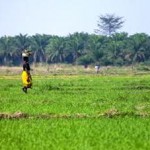
Authors:
Dr. Christina Seeberg-Elverfeldt and Dr. Marja-Liisa Tapio-Biström, Natural Resources Management and Environment Department, Food and Agriculture Organization (FAO) of the United Nations, Rome, Italy.
This Global Survey of Agricultural Mitigation Projects provides a summary of the state-of-the-art of different projects currently developed in this sector. It contains data on 50 agricultural projects focusing on climate change, of which 22 were developed specifically with a greenhouse gas (GHG) mitigation objective. The data on the projects were submitted to an online survey in April 2010. The inventory is by no means meant to provide a complete picture of all currently developed agricultural mitigation projects, but rather aims to provide an overview of the status of activities within this field. The analysis reflects on the focus of these projects, their objectives and main activities, the entry points for their establishment, as well as the management of the carbon benefits. More in-depth information is provided on 22 case studies. The report contributes to the current discussion on finding ways to integrate smallholder farmers into agricultural mitigation activities, and calls for developing financial mechanisms that could facilitate the transformation of current agricultural systems to climate-smart agriculture.
Abstract
Agriculture is a fundamental human activity, providing human societies with food, clothing, medicine and other useful products as well as a number of vital ecosystem services including biodiversity, soil formation, water regulation, carbon sequestration and more. Since our world population is expected to reach 9.1 billion people by 2050, agricultural production needs to grow accordingly to meet this growing demand; climate change presents a challenge to this, since it has and will continue to seriously affect agriculture. The International Food Policy Research Institute (IFPRI) estimates that climate change could reduce irrigated wheat and rice yields by 30 and 15 percent, respectively (Nelson et al., 2009). The agriculture, forestry and the fisheries sectors are essential to the livelihoods of around 75 percent of the people living in rural areas. Thus, the threat presented by climate change is very significant for the livelihoods of a large share of the worlds’ population.
Agriculture and the other land-based sectors are not only impacted by climate change, but are themselves major emitters of greenhouse gases (GHG). About one third of the global emissions can be attributed to the agriculture, forestry and other land use (AFOLU) sectors. Agriculture accounts for 13.5 percent and land use change and forestry represent 17.4 percent of all GHG emissions (IPCC, 2007). However, the land-based sectors are also part of the solution for climate change, because they have a high potential for reducing emissions and enhancing carbon sinks. This potential provided through the AFOLU sectors can make an important contribution to reach the necessary targets for reducing the threat of climate change.
At the beginning of 2010, a new project, Mitigation of Climate Change in Agriculture (MICCA), was established at the Food and Agriculture Organization of the United Nations (FAO) to support efforts to mitigate climate change through agriculture in developing countries and to move towards carbon friendly agricultural practices. As one of the first activities under this project, the participation of smallholders in activities to mitigate GHGs in agriculture will be supported. This involves the development of three to five pilot projects to test on the field the engagement of smallholder farmers in climate change mitigation. It is based on the premise that if changes are implemented in production systems, emissions can be reduced and sinks created in biomass and soils while resilience and productivity of the agricultural systems are increased.
As part of this project activity, a review was made of current agricultural mitigation projects. A survey was sent out in April 2010 for project developers to register agricultural projects that have a mitigation component in an online database. The resulting inventory of agricultural mitigation projects was compiled in order to provide an overview of the state-of-the-art with respect to the types of agricultural projects currently developed, their focus, objectives and activities as well as the entry points for their establishment. The inventory aims to explore and shed light on the agricultural sector’s interest and involvement in the carbon markets.
During the preparation of the survey launch, several other ongoing initiatives by different institutions have been acknowledged, with whom information has been exchanged. Their data have not been included in this publication. However, possibilities are being investigated to establish a necessary, interactive database on the Internet to be fed with brief summaries of relevant projects.
Additionally, several project developers pointed out that many agricultural projects or even rural development projects are currently developed that do not have agricultural mitigation as their main goal; however, their activities indirectly also provide climate change mitigation benefits through the implemented agricultural activities. Thus, the main database provides information on a wide variety of agricultural projects with differing mitigation objectives.
Finally, this inventory is by no means meant to provide a complete picture of all agricultural mitigation projects currently carried out all over the world; it is meant to provide an overview of the current status within this field.
Summary and Outlook
This report provides a sample of the ongoing projects targeting the mitigation of GHGs in agriculture. The sample overview gives an important learning opportunity for understanding the meaning of mitigation efforts, their scope, emphasis, ideas and innovations.














